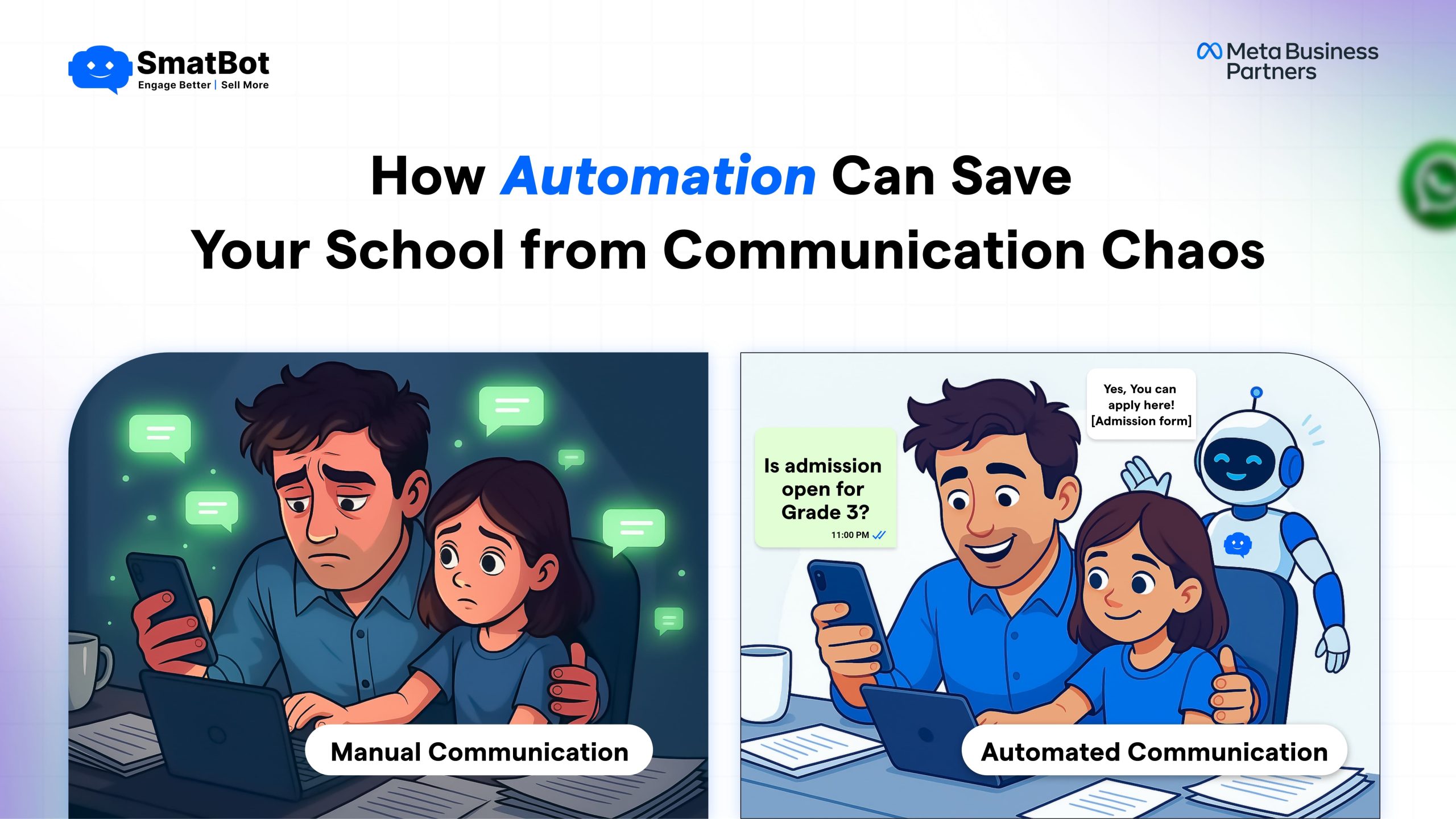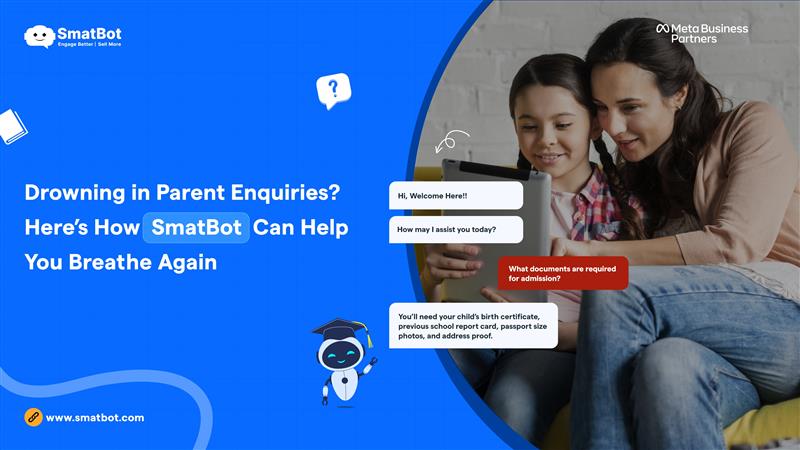In today’s world, chatbots are becoming increasingly influential in business growth. We all know that chatbots ace the automation test but there is much more to chatbots than just automation. For example, Chatbots are streamlining interactions between people and companies by enhancing customer experience. This is enabling companies to pursue new opportunities for improving the customer’s engagement process.
And the hoard of advantages of chatbots are not just related to automation and customer engagement. With a shrinking attention span of people, chatbots are already being used to retain attention from people and have proven to be much more efficient than any other channel.
And creating chatbots that work efficiently has become a hectic task for most businesses. So we compiled a list with tips for creating a chatbot to get the most out of them. We hope these chatbot tips come in handy and help you create one hell of chatbot
Top Tips for Creating a ChatBot That Works.
Make your chatbot conversational
Make sure your bot is conversational. For example, Instead of making your bot act like a boring form while collecting information, Add sentences a normal human being would use like using their name, adding humour to the context etc. This makes the interaction between your chatbot and audience more engaging. Thus making your customer’s loyalty and personal connection towards your brand more strong and beneficial. Also remember, the main aim of your bot is to answer your audience’s questions or gather information. So, be sure not to get in the way of the conversation. 
Give it a personality
Chatbot’s personality isn’t something that fulfils user needs. But it is something much more significant that helps you to hold on to your customer much longer. A bot with Personality can build an emotional connection with a user and can help contribute trust and a positive relationship between customers and brands. For example, if your target audience are fashion freaks try throwing some fashion terms and give some new updates related to the fashion industry. However, don’t try to imitate a human, it’s a very bad idea and people will notice anyway.

Let your audience choose
At present chatbot technology is not advanced enough to answer everything a user asks. So make sure your users are having a good experience irrespective of what their query is. For example, let your audience know the bot cannot answer everything or give them options regarding what your bot can answer. This way you can give your audience the opportunity to select one of these options by using buttons or quick replies. Your audience will also be happy since the value they receive is instant.
Keep it short and sharp
When creating a chatbot, do not go with long messages. Keep it short and relevant to the point you want to make. For example, Don’t make it complicated with unnecessary jargons or useless statements that affect the interaction of the user with the bot. Just answer the questions your users posed, don’t try to answer more than what they asked and make sure that your bot is answering enough to satisfy your users. Remember, your users are interacting with a chatbot because they want value instantly.
Make it proactive
Many chatbots that are currently in use by various organizations are mostly reactive. In layman terms, they are mainly focused on answering queries posed by the audience. Meaning chatbots wait for the user to initiate the conversation. For example, to make the bot proactive, Make the bot initiate the conversation, this can increase the engagement rate by multiple folds. You can also show relevant information to your user based on how they have engaged with the bot previously and boost your brand’s relationship with the user.
Add a little bit of fun
People like excitement and love funny stuff. Then, why not make your bot have what people crave for Fun & Excitement. For example, You can add fun to your bot in many ways like giving funny and witty replies to your user queries or having conversational games to go along when your user is waiting for a response that is being fetched from your DB. So have a quirky persona, make it fun and ensure that your bot is answering your user queries correctly and is functionality perfect. This makes the interaction between the bot and your user more engaging.
Let your users know they’re talking to a bot
This is a very crucial one. When you make the user think that he is interacting with a human instead of a chatbot, chances are they are going to bombard the bot with multiple questions just like they do with their peers(Human nature) and that is going to be bad. On the other side, if your user knows that he is chatting with a bot, he might take a relaxed approach giving the bot a high chance of success. So give a heads up to your users before you start the conversation. One other thing is if you pretend to be a human and the user finds out he is chatting with a bot there might me trust issues which are going to affect your brand.
Use media elements
Now the second most important elements of your chatbot design are visuals. According to researchers, visuals are processed 60,000 times faster than text by a human. So, making use of media elements to convey your chatbot’s messages is more likely to hook your user to the chatbot than just using plain text. For example, You can show a map with directions to their request in the bot or Can use different emojis,Gifs or images and add humour to your chatbot. Just make sure that you are not using too much of media and distracting the user from the main goal.

Minimize User Effort
One of the main goals of chatbots is to minimize user effort. So this is a very crucial one for your chatbot. Don’t make it hard for users to get what they are looking for. Like we said above, keep it short but also make it sharp. To achieve this, You have to give a good thought about what information you want your bot to collect from users. Keep in mind that user effort can be both mental and physical effort. So work on ways to reduce both of them and don’t just focus on a single aspect. For example, minimizing user effort by Extracting information beforehand and reducing user engagement or Asking one question at a time etc.
Improve beginning and end to the conversation:
A healthy conversation is the most vital part of a chatbot. To achieve that, starting the conversation and ending the conversation is going to have a big impact on whether the conversation is healthy or not. For example, the bot can start with a “Hi” and then go on to ask about how their day was. This develops a feeling of being cared for in the users and impacts the way they see your company. And before a conversation ends, you can make the bot wish them a good day along with bidding farewell.
Have The Brand Voice
A company often uses a specific tone-of-Voice in order to brand themselves and successfully communicate their personality to the consumers. So, when developing the chatbot, it is important to consider the tone-of-voice because users tend to see the brand through the chatbot. Maintaining consistency between the brand’s tone-of-voice and your chatbot increases trust & loyalty towards. For example, use your brand colours in developing the UI of the bot. You can also use your brand themes and avatars or logo in your chatbot to maintain the brand tone. So make sure when developing a chatbot, you are doing it your company’s way.
Analyse and update regularly
We all know that the chatbot is a powerful digital marketing tool and automation expert and similarly, with any other internet tool, it needs timely evaluation and should be optimized regularly. Since the technology surrounding chatbots is moderately new, there are many new features and updates given in a regular manner. You can optimize the bots in many different ways. For example, you can find hardpoints where there are a lot of user drop-offs in the chatbot and then can optimize that specific part of the bot to increase engagement
Conclusion:
Having a functional chatbot with strong foundations is essential and good for every enterprise in today’s tech-driven world. The way you develop chatbots is based on what you expect the bot to do for your customers or may a goal and the above-given Chatbot tips are only there to compliment that goal in whatever way possible and not disrupt or diverge that goal.




